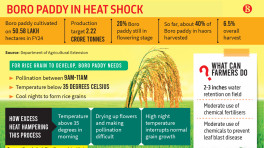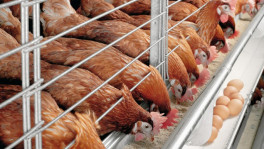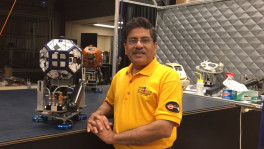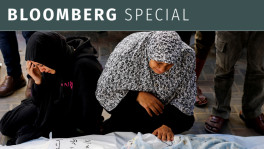3D Bioprinting and the future of healthcare
3D bioprinting - although currently in its early phases of development - has the potential to revolutionise personalised health care and regenerative medicine

Just for a second, try to picture a world in which it is possible to print new tissues, including bone, muscle and even organs. Imagine the endless possibilities that will usher in healthcare.
This may seem like a fantasy from the far future. But surprisingly, much of it is occurring right now, even if it is still in the early phases of development.
New opportunities for medical care and scientific experiments are opening up as a result of recent developments in 3D bioprinting. As a matter of fact, bioprinting has the prospect of becoming the next great thing in the field of personalised healthcare and regenerative medicine.
Scientists have been studying animals that possess the natural ability of regeneration. An excellent illustration is Axolotl - one species of aquatic salamander - able to regenerate its limbs, spinal cord, heart, and other organs, in contrast to humans who do not possess this natural superpower.
Even our common house lizard can regrow its amputated tails. The fascinating ability of regeneration captivated human beings for so long and medical scientists have taken inspiration from these abilities and applied them in the field of regenerative medicine and tissue engineering.
While humans have limited natural ability to regrow some tissues and cells, regrowing organs or body parts is a thing of science fiction. Fortunately, humans are not just slaves of their nature; not constrained just by natural abilities.
With the aid of tools and techniques, humans are already able to artificially possess the natural superpower. Well, at least, to some extent. And that tool is the 3D bioprinters.
For example, in early June this year, 3DBio Therapeutics, a regenerative medicine company based in New York claimed that they had successfully transplanted a 3D printed ear to one of its patients. The patient, a 20 years old female who had a deformed ear from birth, received the implanted ear that was manufactured from her body cells.
This transplant was one of the first successful instances of 3D bioprinting. According to medical scientists, if proven sustainable in the long run, it would constitute a breakthrough in the field of tissue engineering and regenerative medicine.
The technology around 3D bioprinting has been around for quite some time now. In 1988, Robert J Klebe was the first person to print cells using an inkjet printer, which marked the beginning of the field of bioprinting.
Over the years, this technology has come a long way and it has the potential to provide answers to a wide variety of questions in fields such as healthcare. For instance, bladders made from the patient's kidney cells were entirely functional and have already been successfully transplanted into human bodies in multiple cases.
Bioprinters function just like 3D printers but with one important distinction. Instead of plastic, ceramic or metal, the material used here is a biomaterial, i.e. living cells or tissues.
Every biological tissue has distinct cell types. The essential cells (kidney cells, skin cells, etc.) are extracted from a patient and cultivated to make a 'bio-ink' for the printer.
Following comprehensive computer designs and models, frequently based on scans of the patient's cells, printer heads deposit cells with precision exactly where they are required. Over many hours, an organic product is built up utilising a huge number of extremely thin layers.
The prospect of bioprinting different organs with their distinct functions is one that is actively being investigated by researchers. Because tailored human organs may be produced using the patient's cells or stem cells as a basis, one potential outcome of the development of 3D bioprinting in the future might be the elimination of the need for organ donors.
Printing an organ is still a long way to go. We are still decades away from creating a fully functioning artificial organ. However, the theory of 3d bioprinting works because we are already printing less complicated things. Today, we can produce bones, skin and cartilage (strong but flexible human body parts found for example in the ear, nose and some other joints).
There are some similarities between 3D printers and 3D bioprinters, but the main difference is that 3D printers are meant to print solid materials, while 3D bioprinters are designed to create liquid or gel. The delicate materials that include live cells may be safely handled by the 3D bioprinters since they are intended to do so without causing too much harm to the final product.
The technique of 3D bioprinting is an additive manufacturing method that employs the utilisation of bioinks to print live cells. The printer then proceeds to create structures layer-by-layer in a manner that mimics the behaviour and architecture of actual tissues. In the process of bioprinting, a substance known as bioink is employed. This material may be formed of natural or synthetic biomaterials, and it can be combined with live cells.
The technology is also being utilised more often in the process of medication validation and the creation of pharmaceuticals. At this point, the majority of bioprinting research is focused on clinical contexts such as 3D printed skin and bone grafts, and implants.
The development of 3D bioprinting is proceeding at a breakneck speed. This is an exciting moment. Nevertheless, we must be sure that our aspirations about this technology are in line with the facts of the situation.
Attempting to reproduce the various functions that the human body has is incredibly complex. Even if we are not quite there yet, there is little question that the practice of medicine in the future will look considerably different thanks to the inclusion of bioprinting.


 Keep updated, follow The Business Standard's Google news channel
Keep updated, follow The Business Standard's Google news channel
















